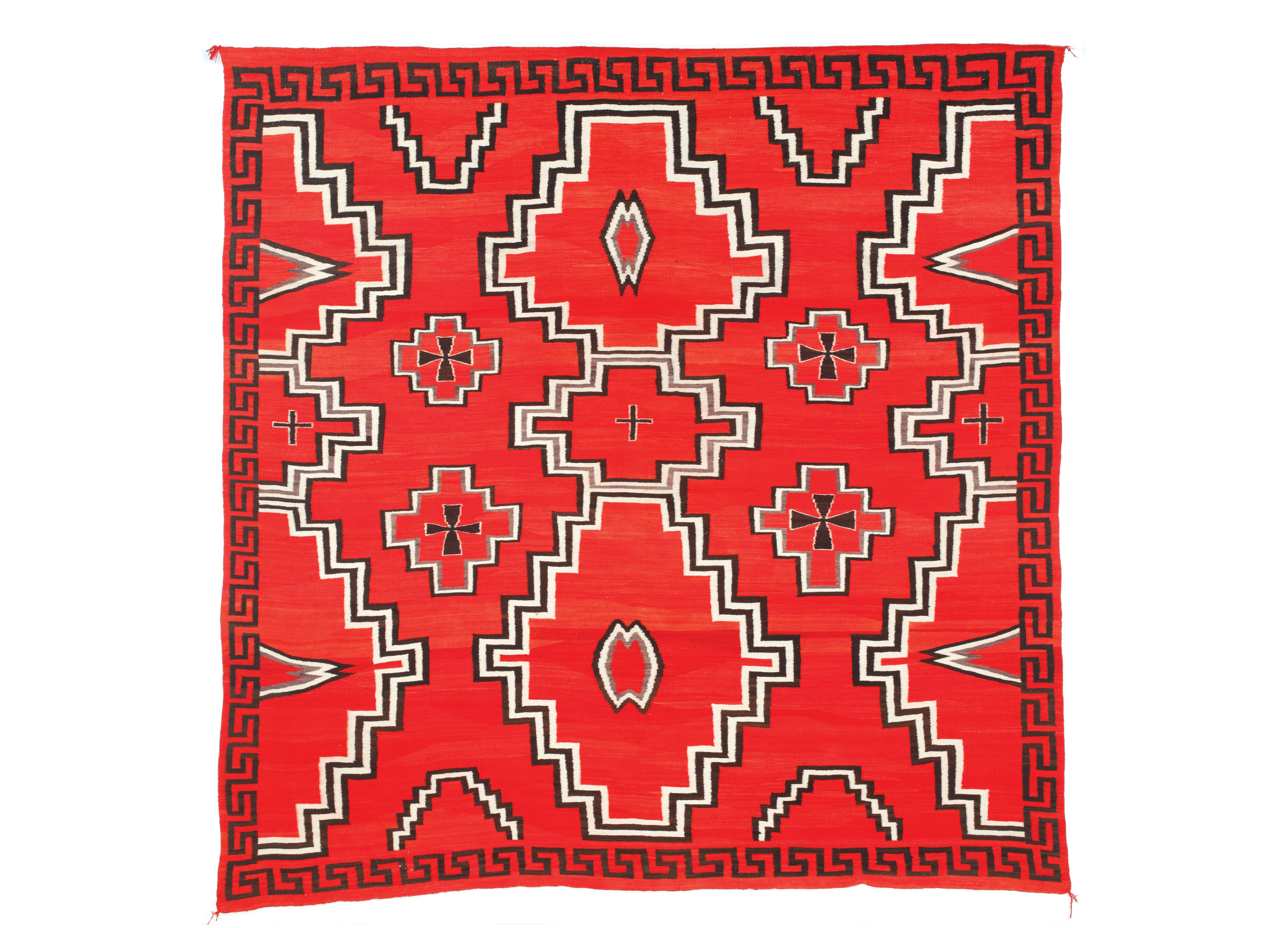Navajo Blankets and Rugs
Navajo, or Diné, are recognized as great masters of textile weaving. The introduction of synthetic dyes provided a great range of colors in unparalleled intensity, prompting weavers to experiment with new designs. The classic five-section banded blanket form in Navajo Transitional Period Banded Wearing Blanket, c. 1890, combines traditional with modern elements. The bold zig-zag designs and brilliant colors create a visually dynamic interplay between background and foreground. Imported yarns produced by Germantown, Pennsylvania textile mills led to the development of finely woven, complex, and detailed pictorial patterns as in Navajo Germantown Pictorial Blanket, c. 1880.
Perhaps the most significant stylistic change during this period was the introduction of the border. In Navajo Early Ganado Rug, c. 1900, the bold black and white stepped-diamond pattern recalls a classic blanket design element, yet its large scale, brilliant red ground, and addition of a border all identify this weaving as an early Ganado rug design. The expansion of reservation trading posts played a key role in the emergence of this new art form—the Navajo rug.

Navajo, Early Ganado Rug, ca. 1900, natural handspun wool with synthetic dyes, 116 x 118 inches. Gift of the George Montgomery Trust, A1-2005.
